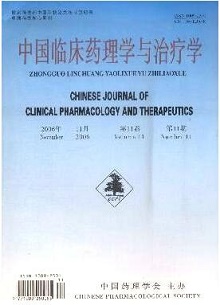Effect of L-arginine on cardiac injury induced by adriamycin in rats
SUN Sheng-tao, XU Yi-qun, WANG Yi-lin, PAN Xiao, ZHANG Qing-biao, ZHAO Hong-xiang, YANG Guan-ming
2006, 11(11):
1291-1295.
 Asbtract
(
154 )
Asbtract
(
154 )
 PDF (268KB)
(
372
)
References |
Related Articles |
Metrics
PDF (268KB)
(
372
)
References |
Related Articles |
Metrics
AIM: From the level of molecule, to study the effect of L-arginine ( L-Arg) on cardiac injury induced by adriamycin (ADM) in rats, and to explore the mechanism of increased content of nitric oxide (NO) with reduced activities of superoxide dismutase ( SOD) and glutathione peroxidase ( GPx).METHODS: Thirty-two Sprague-Dawley rats were randomly divided into four groups ( n =8, each):Control group, L-Arg group,ADM treated grouPand ADM combined with L-Arg grouP.Using biochemistry technique, we determined the contents of associated substance and activities of enzyme.Reverse transcription-polymerase chain reaction ( RTPCR) was used to analyze the expression of associated gene.RESULTS: Compared with ADM treated group, in ADM combined with L-Arg treated group, contents of malondialdehyde(MDA) and nitric oxide ( NO) in myocardium and activity of creatine kinase isoenzymic MB ( CKMB)in serum were significantly increased ( P<0.01).However, expressive levels of copper-zinc superoxide dismutase( Cu-Zn SOD) mRNA, manganese superoxide dismutase( Mn SOD) mRNA, GPxmRNA and activities of Mn SOD, Cu-Zn SOD and GPx were significantly reduced( P<0.01).CONCLUSION: L-Arg intensified cardiac injure.The mechanism may be related to increasing the content of NO in myocardium induced by ADM, and then NO intensified the reduced expressive levels of Mn SOD mRNA, Cu-Zn SOD mRNA and GPx mRNA induced by ADM, thereby intensified the reduced activities of Mn SOD, Cu-Zn SOD and GPx, resulting in intensified cardiac injure caused by the increased reactive oxygen species.


